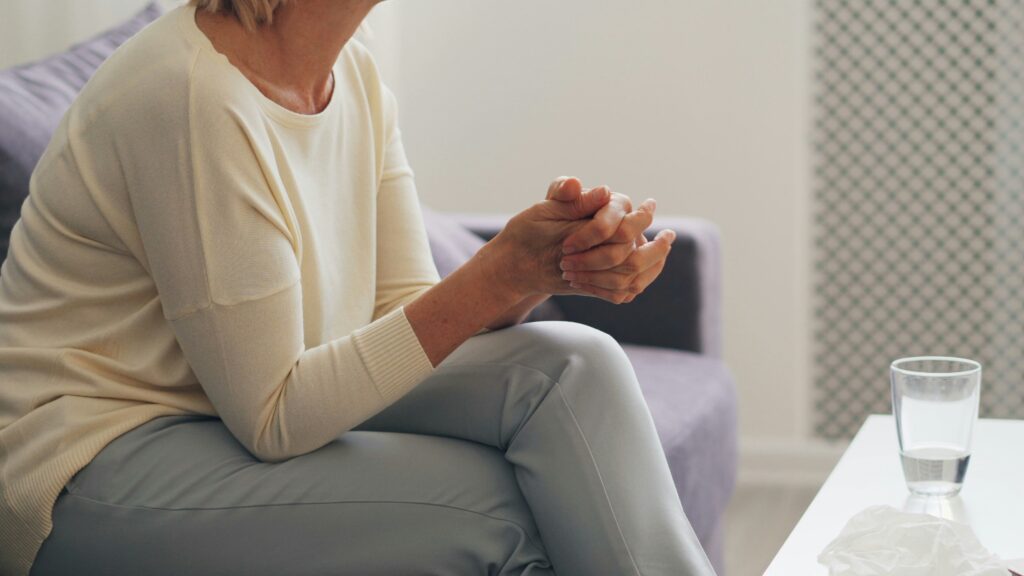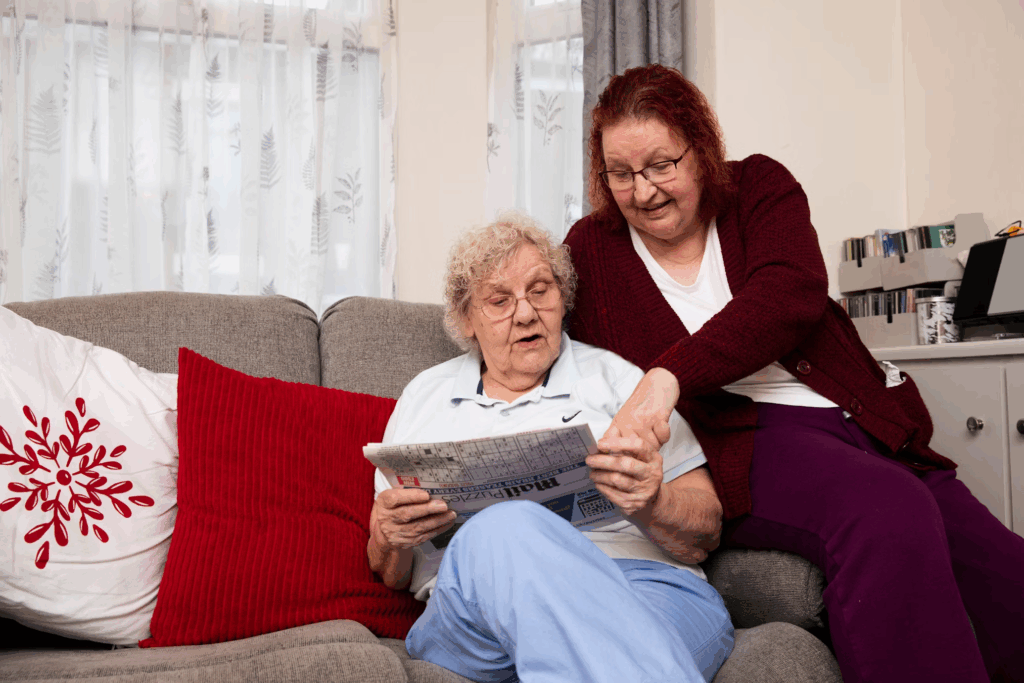
A stroke can instantly change a person’s life. From physical disabilities to emotional and psychological struggles, the road back to routine is challenging but not impossible. Stroke recovery becomes a disciplined, goal-oriented process with appropriate direction, compassionate care, and constant support. In-home care is one of the best approaches to enable stroke survivors to regain their freedom.
Home care offers a familiar and safe setting where caregivers assist patients in following therapy programs, completing daily activities, and making consistent improvement. It not only lessens the family’s load but also helps stroke survivors boldly restore their lives. Let’s investigate why home care stroke strategies are successful, how home caregivers contribute to improving results, and how this care helps physical and emotional rehabilitation.
Understanding the Impact of Stroke
Strokes happen when blood flow to a portion of the brain is disrupted, damaging brain cells. Different disabilities include speech problems, paralysis, memory loss, and emotional instability might follow from this. Physical therapy, speech therapy, occupational therapy, and long-term caregiving assistance could all be part of the route to recovery, depending on the degree of difficulty.

Many patients move to home care following a hospital stay; stroke recovery depends on ongoing therapy and monitoring in this setting. From medication management to patient retraining of basic chores, home caregivers offer vital help at this stage.
Why Home Care Is Essential for Stroke Recovery
For stroke survivors, moving from a hospital to home can be trying. Luckily, housekeeping provides the tools required to create a healing space. Patients should feel comfortable, supported, and competent in reaching rehabilitation targets.
Benefits of Home Care for Stroke Patients
- Provides personalized support tailored to recovery needs
- Offers consistent care from trained caregivers
- Allows patients to heal in a comfortable, familiar setting
- Reduces hospital readmission rates
- Improves emotional well-being and motivation
With home care, patients receive help from professionals who understand how to deal with post-stroke complications, from mobility limitations to cognitive difficulties. This level of attention significantly affects the patient’s ability to recover.
How Home Caregivers Help Stroke Survivors
Professional home caregivers are skilled in assisting stroke survivors through every recovery phase. Their presence offers peace of mind to families and helps create a routine that promotes healing.

Key Areas Where Caregivers Help
- Caregivers help with bathing, dressing, grooming, and toileting
- Support with mobility, including transfers and walking
- Management of medications and appointments
- Emotional support and encouragement
- Communication assistance for patients with speech difficulties
- Meal planning to meet nutritional needs
These day-to-day services are essential, especially for individuals who may feel overwhelmed or dependent. By helping with both small tasks and larger goals, home caregivers help patients gradually regain autonomy.
The Importance of Personalized Care Stroke Plans
No two strokes are the same, so a customized care plan is vital. A home care stroke strategy considers the patient’s impairments, living situation, and emotional needs. Care stroke plans are developed collaboratively with healthcare providers, family members, and home caregivers.
Components of a Stroke Recovery Plan at Home
- Physical therapy for mobility and strength
- Occupational therapy for everyday skills
- Speech therapy for communication challenges
- Cognitive rehabilitation for memory and concentration
- Emotional support to combat anxiety and depression
By tailoring care to the patient’s unique situation, caregivers can offer meaningful, results-driven assistance. These personalized plans help ensure long-term success in stroke recovery.
Promoting a Quality Life After Stroke

Beyond physical healing, achieving a quality of life is crucial to stroke recovery. A sense of purpose, dignity, and self-worth can dramatically influence outcomes. This is where home caregivers become more than just assistants—they become motivators and emotional anchors.
Ways Home Care Improves Quality of Life
- Encouraging independence in safe, manageable steps
- Engaging patients in hobbies or light activities
- Providing consistent emotional support
- Preventing isolation through conversation and companionship
- Creating a routine that feels empowering, not limiting
Families often report seeing a noticeable difference in their loved one’s confidence and happiness when supported by professional caregivers. These emotional benefits are just as important as physical ones.
Home Care Stroke Safety Measures
Care stroke recovery includes making the home a safe place. Falls and injuries are common among stroke patients due to muscle weakness or loss of balance. Home caregivers are trained to prevent accidents and adapt the home environment.
Common Safety Enhancements
- Installing grab bars in bathrooms
- Using non-slip mats
- Rearranging furniture for easy mobility
- Ensuring proper lighting throughout the house
- Encouraging the use of mobility aids when necessary
With these measures, patients can feel secure and move about with greater ease and less fear.
The Emotional Role of Support in Stroke Recovery

Depression and anxiety affect many stroke survivors, especially in the early stages of recovery. Feelings of frustration, fear, or hopelessness can hinder progress. Emotional support is vital in these moments.
Home caregivers help by offering companionship, understanding, and encouragement. They’re trained to recognize signs of emotional distress and alert family members or healthcare professionals when more help is needed. Even small gestures, like active listening or positive reinforcement, can have a powerful effect.
Family Involvement in Home Care
While professional caregivers help immensely, the involvement of family members also plays a crucial role in recovery. Families are encouraged to participate in the stroke recovery process by learning caregiving techniques, offering emotional support, and reinforcing routines established by home caregivers.
This teamwork ensures continuity of care and creates a strong, nurturing environment for the patient.
Indy In-Home Care: Experts in Stroke Recovery Support
We specialize in personalized, compassionate home care for stroke survivors at Indy In-Home Care. Our professional caregivers are experienced in helping patients regain independence and achieve a better quality of life through targeted care plans and dedicated emotional support.
Whether your loved one needs short-term assistance or long-term home care, our team provides the expertise and encouragement that makes all the difference.
Integrating Therapy into Daily Life
Recovery isn’t confined to scheduled therapy sessions. Home caregivers help patients practice daily exercises and routines, turning simple tasks into therapeutic opportunities.
Examples of Integrative Therapy
- Practicing grip strength while folding laundry
- Using speech exercises during conversation
- Encouraging balance and coordination during daily walks
- Utilizing memory games to boost cognitive function
This approach reinforces therapy goals and helps patients apply new skills to real-world tasks.
Monitoring Progress and Adjusting Care
Ongoing monitoring is essential to ensure that the patient is progressing and not regressing. Home caregivers track recovery milestones and report changes to healthcare providers. The care plan is adjusted if a patient struggles with a particular activity.
This flexibility ensures that stroke recovery remains focused and responsive to the patient’s needs.
Community Resources and Social Support
Encouraging social interaction is important to maintaining a quality of life after a stroke. Care stroke recovery often includes connecting patients to local support groups, senior centres, or recreational programs. These outlets help combat isolation and foster a sense of belonging.
Home caregivers may also accompany patients to these events, providing transportation and assistance to ensure they can participate confidently.
When to Consider Professional Home Care
If your family is overwhelmed or the patient’s needs are beyond what you can manage, professional home care may be the solution. Signs that it’s time to seek help include:
- Frequent falls or mobility issues
- Missed medications or confusion
- Increased emotional distress
- Inability to manage daily hygiene
- Caregiver burnout
With skilled caregivers, you ensure safety, consistency, and meaningful progress.
Choosing the Right Caregiver Team
Selecting the right home caregivers is crucial in building a strong support system. Look for:
- Experience with stroke recovery
- Positive reviews or recommendations
- Flexible care plans
- Compassionate and patient staff
- Clear communication with healthcare providers
These factors ensure that your loved one gets the care they need and the support they deserve.
Final Thoughts
The path to stroke recovery is challenging but filled with hope. With dedicated home caregivers, a safe environment, and a structured routine, patients can regain strength and independence and enjoy a better life.
Remember, home caregivers help in more ways than one. They assist with physical needs, provide emotional support, and offer encouragement every step of the way. Through professional home care, you’re not just helping someone recover from a stroke—you’re helping them live again.
Let Indy In-Home Care be part of your family’s recovery journey. Our team is committed to providing the highest care, compassion, and reliability—because your loved one deserves nothing less.
